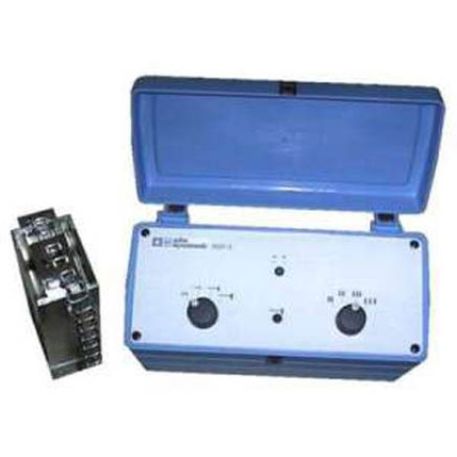RSP-3 (Pipe Pecker)
The detection and localisation of drinking water pipes may prove to be difficult if the pipes are made of non-conducting material. This applies to materials such as asbestos cement, PE and PVC. Here the acoustic sound pulse technique is employed. A sound pulse generator transmits vibrations along the pipe. Depending an type of material, diameter and type of soil, the sound pulses propagate along the pipe and can be detected on the surface by means of a geophone. In this manner the route of the pipe can precisely be located. The achievable range depends on many factors such as depth, type of soil and pipe material. This acoustic location method can also be applied to metal pipes. It is extremely helpful for pipes with Tyton sleeves and in any event when, due to electrical interference, location by electric means is impossible. The range achieved an metal pipes is slightly larger than on others.
Coupling
The pulse generator is coupled to the pipe to be traced by means of a tight chain. On plastic pipes a resilient disk may be used to prevent wear caused by this mode of excitation. The pulse rate will drop off as soon as the battery runs low, which is also an indication of the residual charge.
| Pulse rate | 3 pulses 2 pulses for a weak battery |
| Range 1 | 40 / min |
| Range 2 | 60 / min |
| Range 3 | 80 / min |
| Range 4 | 120 / min |
| Intensity | 25-50-100 % |
| Power-on | Green LED signal |
| Pulse | Red LED signal |
| Battery check | Flashing green signal + pulse rate change |
| Rechargeable battery | NiCd 2 V 2.8 Ah |
| Operating cycle | > 16 h |
| Charging cycle | 2 h ‹ |
| Operating temperature | -10°C to +50°C |
| Chain length | 580 mm |
| Dimensions IG 3 | 190 x 95 x 65 mm |
| Weight IG 3 | 2.6 kg |
| Dimensions RSP 3 | 250 x 115 x 160 mm |
| Weight PSP 3 | 2.1 kg |

